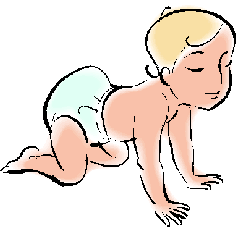In many traditions and cultures, December is the month of major
holidays which include the giving and receiving of gifts. Normally, one would assume this time is only associated with
joy and gratitude.

All-too-often, however, this time of year can be associated with a lot of stress! Travel schedules, family obligations and unrealistic expectations placed upon us can create stress that builds up as tension in our bodies. This leaves us more vulnerable to feeling aches and pains in our joints or muscles, or succumbing to the ever-present cold or flu virus.
It is not surprising that stress causes tension. But how is it that tension can actually hurt us? If you have ever been the victim of a stressful situation (who hasn’t?), you’ll probably remember the muscles of your neck and shoulders feeling tight, or maybe you were aware of clenching your jaw or fists? This is a typical physical response to mental or emotional challenges. How this leads to damage in your body can be found in the relationship between muscles and joints: Some muscles tighten to provide postural support, and others contract and relax to generate movement. Each muscle attaches to at least two different
bones, generating relative movement around a common joint. For example, the bicep muscle crosses the elbow joint, and when the bicep shortens, the arm is flexed at the elbow. Muscle contraction places an increased physical strain or load on the tissues, but this strain is used to perform a useful function. Movement of your muscles is coordinated by the messages relayed by nerves coming from your brain.
When muscles are not needed, nerve signals are silenced and the muscles return to a relaxed, resting tone, ready for when they are next called upon to contract.
![clip_image002[5] clip_image002[5]](http://lh4.ggpht.com/-TKZpm7uZiLg/Tu-miKOkeYI/AAAAAAAAAf0/MVYWwYS1KEQ/clip_image002%25255B5%25255D_thumb.gif?imgmax=800)
When abnormal tension exists in the nervous system (caused by stress), muscles are bombarded by a low-level of nervous system activity – this does not create enough stimulation to cause a contraction, but generates a higher resting tone. This higher tone (muscle tightness) not only places an undue amount of strain on the tissues not being used, but it also leads to a greater compressive load on the joints that are coupled with the muscles in question. This is very unhealthy for the joint, as it could convert minor imbalances to major ones, leading to misalignment and subluxation of the joint. If this happens over time, extra pressure can also lead to accelerated joint degeneration – or osteoarthritis.
Chiropractic to the rescue!
Anyone who has experienced a chiropractic adjustment will know what it feels like to have pressure taken off their joints. Instant relief! However, did you know that one of the main reasons why Chiropractors adjust your spine is to help restore proper tone
in the nervous system? The father of Chiropractic, D.D. Palmer, spoke about this all the time. He described normal tone in the human nervous system responsible for a state of ease in the body, and abnormal tone in the nervous system leading to dis-ease. When the spine has areas of misalignment, this can cause irritation of the nervous system. These areas of misalignment or irritation are called vertebral subluxations.
Having nervous system irritation is like having extra ‘noise’ in the room when you are trying to have a conversation with someone. This makes it harder to hear the message. As a result, you either have to shout to get your point across, or risk not being understood. In the body, when this extra noise occurs in the spine (from subluxations) this can cause miscommunication
in the nervous system, which can lead to dysfunction and pain.
With a well-placed Chiropractic adjustment, vertebrae are swiftly and effectively shifted back in place, taking excessive pressure off the joints and removing the excessive ‘noise’ from the nervous system that vertebral subluxations can cause.
That is why scheduling a visit to your Chiropractor just before and just after the holiday season is perfect timing! It can help facilitate a greater sense of ‘ease’ in the body, making it easier to
handle the stress that normally awaits you at this time of year. Or, once you have been exposed to and felt the effects of the stress, your Chiropractor can bring your system back to normal.
We can not think of a better gift to give yourself this year!
HAPPY AND SAFE
HOLIDAYS TO
EVERYONE!








![clip_image002[5] clip_image002[5]](https://blogger.googleusercontent.com/img/b/R29vZ2xl/AVvXsEhwE5oR_Ke3__P_fk2tGC9qrL-M8JeyLYYu_ulLm8esQh2GkmgkOzlvYM8fLDKZfNWHCkzPjKHFV2-BpdQc0vChcG9Yzf4FLajhz8uOpxiX0OSlgLxTM9tc1UtpdcE85XfZUgz-Iyq_DfAr/?imgmax=800)

![clip_image002[7] clip_image002[7]](http://lh6.ggpht.com/-4cglcRYpLik/TrBT1NaR-dI/AAAAAAAAAco/SwHbDdvVQLk/clip_image002%25255B7%25255D_thumb%25255B1%25255D.gif?imgmax=800)










![clip_image002[4] clip_image002[4]](http://lh5.ggpht.com/-_c0ATk1aECM/Tm1yl6SchJI/AAAAAAAAAaU/w6Deopakcyo/clip_image002%25255B4%25255D_thumb.gif?imgmax=800)





























